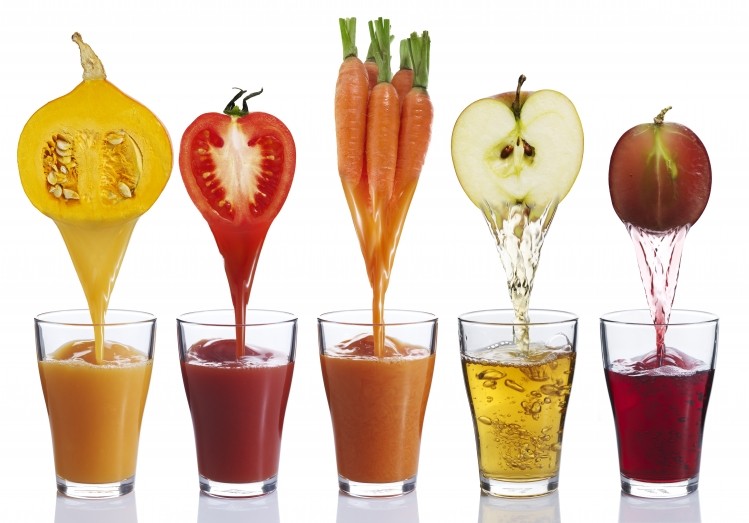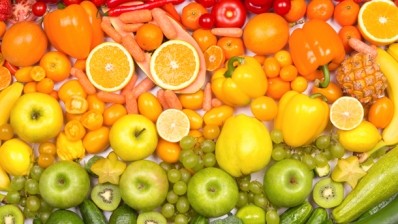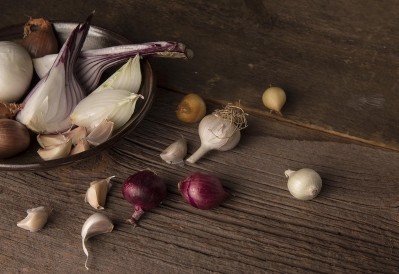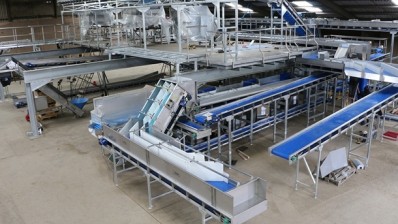Colours and flavours: the rise of foodstuffs

Key points
The study, which found a link between six artificial colourings and hyperactivity in children, proved the catalyst for the growth of natural colours in most European markets.
But within this bigger picture, another more recent trend is coming to the fore. Increasingly, food and drink companies are turning to colouring foodstuffs to provide that natural colour.
“We have turned the clock back and returned to utilising the natural colour of the food,” says Vince Martin, who is responsible for business development at Kalsec Europe.
“The practice is now firmly established in the EU and is also a trend that can be seen in other markets, if somewhat delayed.”
Colouring foodstuffs have in fact now become so popular that the EU has issued a set of guidelines to distinguish them from natural colours. Armed with a clear set of definitions to work from, UK food manufacturers are now ideally placed to make the most of what is a booming market.
Actual market data for colouring foods is difficult to obtain because of the way they are labelled. However, according to Innova Market Insights, the number of new product introductions with colouring foods in Europe grew by 8.7% in 2015. This is compared with an increase of 5.6% for natural colourants, and a decline of 5.2% for artificial colours.
Chr Hansen agrees that colouring foodstuffs are outperforming natural colours in growth terms, but points out that this is from a smaller base.
“The use of natural colours is still increasing year-on-year as more countries and product applications convert from artificial colours, and this is still the best value-for-money solution for most manufacturers,” says Peter Thorninger, senior vice president of sales and marketing at Chr Hansen’s natural colours division.
“In comparison, the clean-label trend with colouring foodstuffs is experiencing much higher growth rates but still makes up a limited section of consumer products available today.”
One of the reasons for the popularity of colouring foodstuffs could be that they are more in line with consumer perceptions of what constitutes ‘natural’.
Consumer study (return to top)
A global consumer study commissioned by GNT and carried out by TNS found that only one-in-five consumers perceive colours made from substances such as insects and minerals to be ‘truly’ natural.
“The majority expect them to be made from edible raw materials such as fruits and vegetables and without any chemicals,” says Guido de Jager, head of group marketing at GNT.
“This applies to colouring foods, as they are obtained exclusively from fruit, vegetables and edible plants, via gentle physical processes such as pressing, chopping, filtering and concentrating.”
The way in which colouring foodstuffs are classified and labelled on pack also contributes to their consumer appeal.
They are considered ‘ingredients’ rather than ‘additives’ and as such, do not carry an E-number classification.
“The labelling of colouring foodstuffs as food ingredients offers the advantage of naming the natural source of the colouring foodstuff, such as vegetables or fruit,” says Malte Pietsch, director, of product management ingredients with Wild Flavors & Specialty Ingredients (WFSI).
“This underlines the natural image in comparison with labelling the E-number of an additive.”
Generally, colouring foodstuffs will appear on ingredient lists as a fruit or vegetable extract or juice, for example, ‘black-carrot juice concentrate’ or ‘extract of curcuma’.
In reality, this is not that different to the wording used to label natural colours, because even though they are classed as additives, natural colours don’t have to declare their E-numbers on pack. Therefore, corresponding label wording for natural colours derived from these sources could include ‘black-carrot concentrate’ or ‘curcumin’, even though they have E numbers (E163 and E100 respectively).
“For the average consumer, it can sometimes be hard to tell the difference, since it is also allowed for colour additives to be declared by name as opposed to E-number,” says Thorninger.
This may seem confusing or even misleading to consumers, but then again, as Thorninger explains, colouring foodstuffs aren’t always that different to natural colours in their make-up.
“In some cases, they are exactly the same product. It is just that in general, foodstuffs are less concentrated as they need to retain the original characteristics of, say, a black carrot,” he explains.
Difference in the detail (return to top)
That said, there is a difference between colouring foodstuffs and natural colours, and that distinction – which mainly has to do with whether or not selective extraction has taken place – has been set out in EU guidance notes that were adopted in 2013 and came into force in November 2015.
The guidance specifies that colouring ingredients can be considered ‘colouring foods’ rather than ‘colouring additives’ if they are derived from fruits, vegetables, herbs or other foods that have been usually consumed in the EU before 1997. It also says they should be minimally processed, and should retain the characteristics of the material, among other specifications.
“Colouring foods are obtained exclusively from fruit, vegetables and edible plants. There is no selective extraction of pigments, meaning that the characteristics of the raw materials such as aroma and taste or nutritive characteristics are retained in the final product supplied to customers,” explains de Jager at GNT.
He likens the extraction methods to “normal household processes”.
“Fruit and vegetables are chopped and cooked, water evaporates, fibres are taken out and the rest is concentrated to an industrially standardised level. This means manufacturers add a concentrated food – and not an additive – to their product. They are colouring food with food,” de Jager says.
To reinforce the distinction, GNT recommends using label wording such as ‘colouring foods (concentrates of carrot, hibiscus)’.
“This consumer-friendly and transparent labelling shows at a glance that colouring foods are natural colours made from foods and that carrot and hibiscus are used for colouring purposes. Most of our customers follow this recommendation,” says de Jager.
GNT also encourages manufacturers to communicate the use of colouring foods on the front of the pack with the wording ‘coloured with fruit and vegetables’ so that consumers immediately see and understand that natural ingredients are used for colouring.
In the study conducted by TNS, 75% of consumers agreed that this claim was ‘credible’, de Jager says.
In providing a clear definition of what constitutes a colouring foodstuff, the EU guidance has knocked several products out of the market, leaving some gaps in the colouring foodstuff spectrum.
Blue and green hues are one of these ‘white spots’.
“Previously, nettles and spinach were the preferred colouring foodstuffs when it came to making foods green. However, since November 2015, these colour solutions no longer satisfy the criteria of EU guidelines and have lost their status as colouring foodstuffs,” says Pietsch.
WFSI suggests that a blend of spirulina with curcuma, safflower or carrot can be an alternative for creating brilliant shades of green for confectionery products and ice creams. Green and blue colouring foods, however, have limited use in beverages.
“Smoothies and syrups work well, but soft drinks with high acidity and high free water capacities often do not work,” says Pietsch.
Following the publication of the EU guidance, a number of yellow and orange shades that were selectively extracted from paprika and other sources also vanished from the market.
“This challenged the food industry in the short term,” says Thorninger.
But he says new yellow and orange colouring foodstuff shades, primarily based on carrot concentrates, have since been launched onto the market.
“These are applicable to ice cream and bakery applications in particular,” he says.
Another option for these applications is a new curcuma formulation, developed by WFSI. The colouring foodstuff satisfies EU standards because its concentration factor is below six.
Taste disadvantage? (return to top)
While from a consumer appeal perspective it is an advantage that colouring foodstuffs maintain all the characteristics of the food source, from a formulation point of view, this could be a potential downside.
“Using food as colour does, of course, bring taste to the end product. Care has to be taken to ensure that the materials used do not detract from the final product taste,” says Kalsec’s Vince Martin.
However, he says the scope of foods being prepared to bring colour is increasing and that lower flavour impacts are a result of good material selection.
WFSI is equally confident that manufacturers won’t have taste problems when formulating with its colouring foodstuffs.
“Our Rainbow range does not affect flavour. Red radish is one example that is associated with undesirable flavour impressions, but WFSI has optimised it so that its colorant properties are fully leveraged without having any sensory impact on the flavour,” says Pietsch.
Similarly, de Jager says that GNT’s Exberry brand of colouring foods is extremely concentrated, has negligibly small dosage, and a taste “next to impossible” to detect.
“Furthermore, flavours and/or sugar are often added to the food or beverage, which ensures that a potential taste residue will not be found in products coloured with Exberry,” he adds.
Still, formulating with colouring foodstuffs is not without its challenges, and these are mainly around achieving brightness and clarity.
It is often difficult to maintain the same vivid colour when switching from synthetic to natural colours, and can be even more of a challenge when using lower concentration natural colouring foodstuffs.
“To properly colour, foodstuffs need to be used in a higher dosage than a natural colour where the colour properties are selectively extracted. The high dosage will, due to higher water activity, limit the use of concentrates in certain applications if a very brilliant appearance is required, for example, in chocolate dragées,” says Thorninger.
He adds that ‘harsh’, acidic environments can be another problem area as the juices or anthocyanin can change shade.
“Moreover, some foodstuffs are highly sensitive to long pasteurisation, making this application difficult,” he adds.
Complete clarity can also be difficult to achieve, which can be a limitation in some applications, according to Martin.
“Consumers are very sensitive to tiny amounts of haziness in a clear product and interpret it as defective. A very slight cloud in a product like a boiled sweet or soft drink will lead to doubts about its quality,” he says.
But the industry is unapologetic about the limitations of some colouring foodstuffs, which, after all, arise from their status as a natural ingredient.
As Chr Hansen’s Thorninger puts it: “Colouring foodstuffs are an excellent option for certain applications – and less attractive in others.”
Flavours as sweeteners
Flavour companies are pioneering a new approach to sugar and fat reduction flavour systems that allow manufacturers to slash levels of these macro-nutrients without impacting the sensorial profile.
UK flavour company Create Flavours has developed natural flavour systems that enable sugar reduction of up to 30% in soft drinks.
There are essentially two tiers to these clean-label flavour systems, the first being a blend of botanical extracts produced by the company’s in-house extraction methods.
“Using a proprietary technique, we create extracts that impart a very full, rich taste. These botanical extracts are fundamentally the backbone of the flavour system,” says Create Flavours technical director Nick Dyson.
The other dimension comes from volatile aromatic compounds that are commonly used in flavourings to give the impression of sweetness.
“These volatile materials, when used at a minimum level of detection, give the aroma and the taste perception of sugars,” says Dyson.
Using this approach, Create Flavours has reduced the sugar content of a traditional cream soda by 30%. It reports that in sensory tests, tasters had difficulty distinguishing between the full and reduced sugar versions.
Sensient Flavors, meanwhile, has been working on natural flavouring systems that enable sugar and fat reductions in ice cream.
The company’s All-Purpose Sweet Solutions and DairyBoost portfolios are said to “reduce fat and sugar significantly while compensating for any associated sensory shortcomings, particularly in terms of texture and mouthfeel”.















